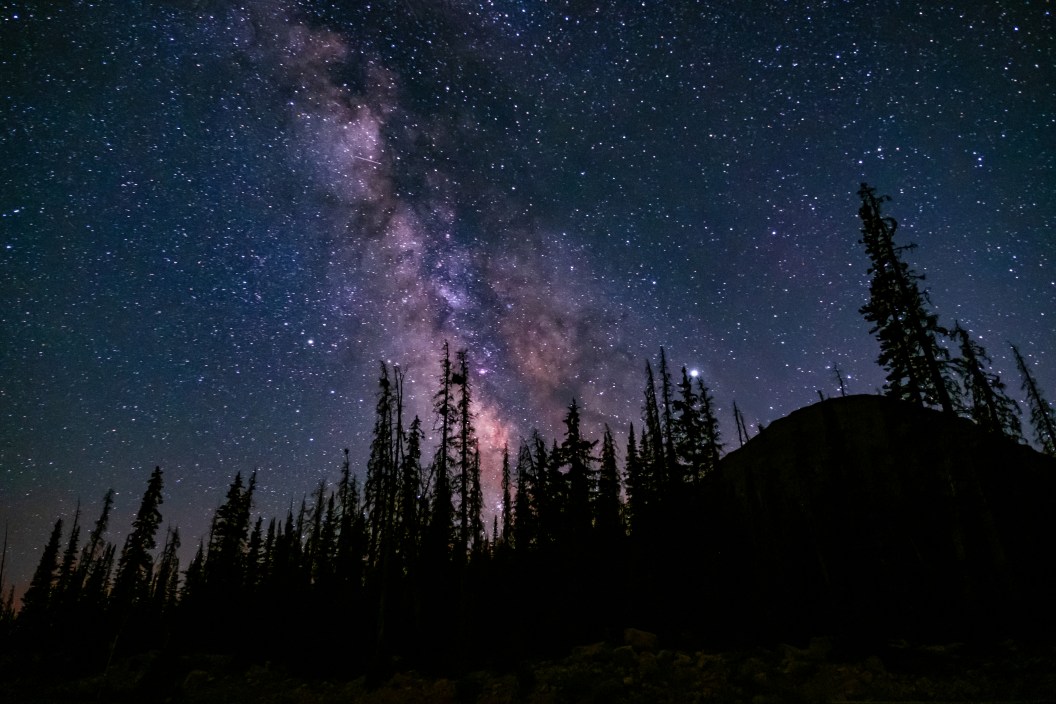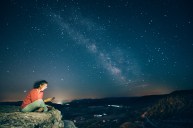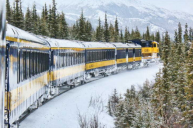Dark skies have become harder to find as cities grow, but with more people turning their eyes to the skies, protecting and preserving light-pollution-free areas has become a priority. As light pollution spreads even out to small country towns, National parks are among the best places for star viewing.
While most people look forward to summer trips in the national parks, many still have quite a bit to offer during the winter months, the sky is there no matter if it's cold or hot. You may just need to pack a few extra layers! The colder months also draw fewer crowds, giving you and your family a better opportunity to see the stars in peace. In honor of the lovely constellations, a couple of parks are holding stargazing events in the following weeks for adventurers who don't hang up their hats for the winter.
Boreal Stargazing Week
Bundle up and strap on your snowshoes for a park ranger-led nighttime snowshoe hike at Voyageurs National Park. The February 10th event, put on by the Voyageurs Conservancy in conjunction with the park, takes visitors on a guided snowshoe hike at Black Bay Beaver Pond from 6:00 p.m. to 7:30 p.m.
Visitors can look at the stars through the telescopes. Don't worry if you don't own a pair of snowshoes. Pop on an appropriate pair of snowshoeing boots and enjoy free snowshoe rentals from the park, made available at the trailhead—plan on bundling up with extra layers and bringing a headlamp for extra light.
On Saturday, February 17, from 6:00 p.m. until 7:30 p.m., visitors can enjoy cross-country skiing at Tilson Bay Bogwalk. However, unlike the snowshoeing event, visitors hoping to join here must bring their own skis. There aren't any available at the Tilson trailhead, and rentals are limited at the nearby Rainy Lake Visitor Center.
While these two parks are highlighted, parks across Minnesota will hold various events, from snowshoeing hikes to talks with astronomers and fabulous night sky tours.
Death Valley Dark Sky Festival
Death Valley is not a stranger to dark sky festivals. From March 1 through 3, revel in the otherworldly landscape and unimpeded night sky views at their dark sky festival. Visitors will have the opportunity to scope out the stars and listen to talks from scientists explaining the important research they are conducting in the area. Their research centers around using the park's landscape to better understand planets like Mars.
Frustrated that your dark sky pics don't look as good as the real thing? Fear not—experts will share tips on taking stellar night-sky pictures. The three-day event is sponsored by Death Valley National Park, Death Valley Natural History Association, Jet Propulsion Laboratory, Ames Research Center, SETI Institute, NASA's Goddard Space Flight Center, and the California Institute of Technology.
Cinnamon Bay Night Sky Program
While it may not be a chilly experience, Virgin Islands National Park is holding night sky viewing every two weeks from 8:15-9:00 p.m. The 45 minute long Wednesday program gives visitors a glimpse at the stars above, unecombered by glaring lights. The event will be held until June 26.
Explore the Night
If you happen to find yourself in Sagurao National Park between now and March 31st, you should join in their Explore the Night Sky event. Visitors meet at the Rincon Mountain Visitor Center and take a moonlit hike through the area. You will get the chance to see night time animals, including bats! The park suggests that you bring plenty of water, a flashlight, and a jacket for the up to 1.5 mile trek. The hike typically lasts aroung two hours and no reservations are needed.
Star Program
Haleakala National Park seems like the perfect spot for night sky viewing, and that's because it is! But don't let its tropical home fool you, it will be plenty chilly up at almost 10,000 feet.
From March 3 through March 17, Sunday evenings at the park will be dedicated to viewing the winter night sky with the help of rangers. The event begins at 7:00 p.m., but the park reccomends that visitors arrive early to avoid traffic. The drive from the entrance to the summit can take 30 minutes or more, depending on traffic.
Dark Sky Tours 2024
In Cedar Breaks National Monument, dark sky tours are being held every Saturday through March 17 beginning at 5:30 p.m. Rangers lead a guided tour of the stars, nebulas and planets, which includes looking through a telescope to see the wonders of space close up. Unlike other events, this one does require that reservations are made, and visitors must pay the $10 park entrance fee.
Solar Eclipse Viewing Parties
April brings first total solar eclipse of 2024, which will be visible as it crosses the sky from Texas to Maine. Parks throughout the viewing area will hold viewing events for park visitors and sky enthusiasts. Parks will be at varying levels of darkness, with a variety of events for children and adults alike. So far, participating parks are:
- Sleeping Bear Dunes National Lakeshore: 12 p.m.-4:00 p.m.
- Fort Stanwix National Monument: 1:00 p.m.-4;30 p.m.
- Women's Rights National Historical Park: 1:00 p.m.-4:00 p.m.
Only 27 of the 425 national parks will go completely dark during this event. Check out the solar eclipse path at the National Park Services page for more!




